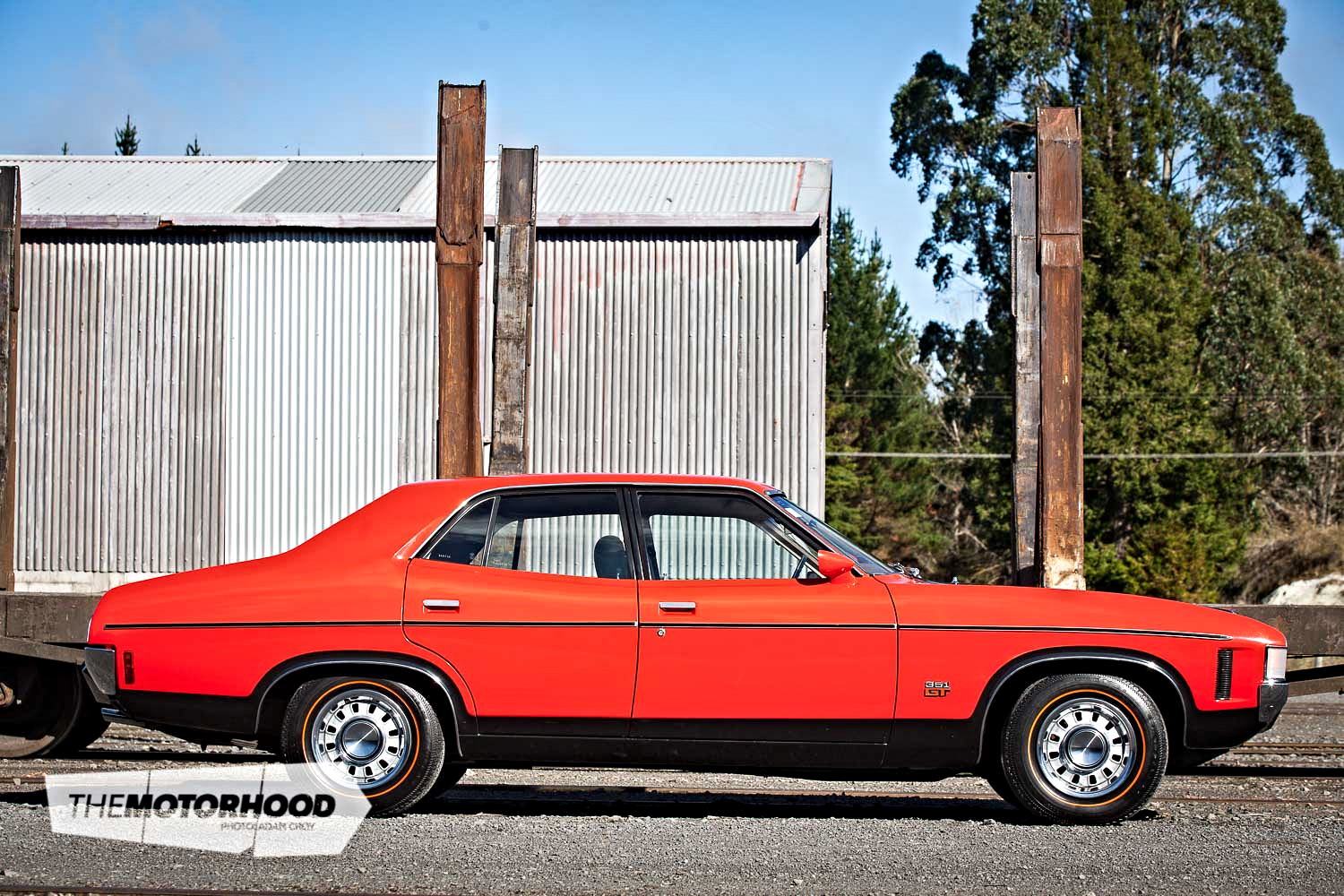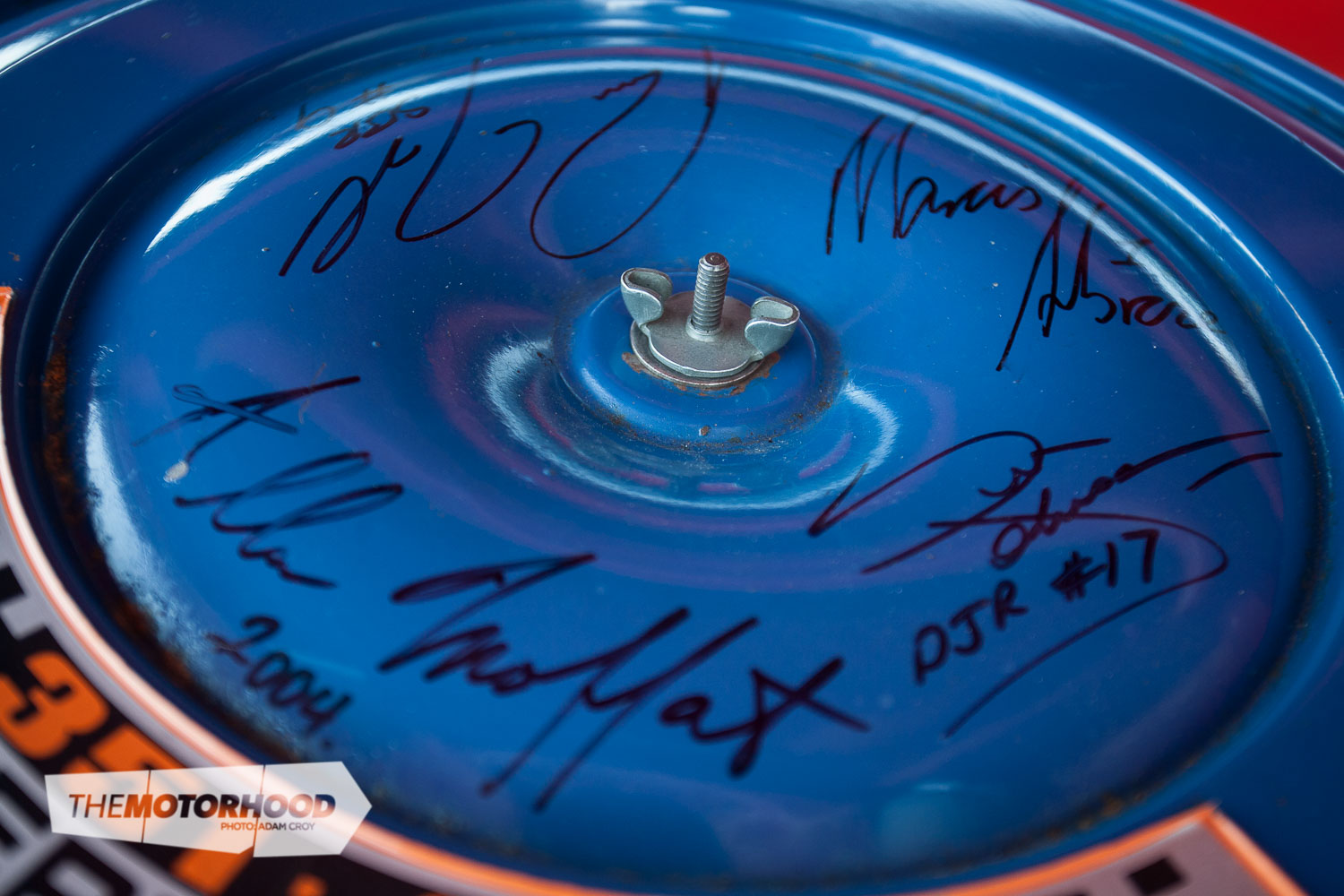The competition
With The Ellerslie Intermarque Concours and Classic Car Show coming up on February 14, we decided to feature this incredibly original 1972 XA GT Falcon, which has been entered into 2016’s Survivors Class competition.
The Survivors Class competition was introduced two years ago as part of the main judging event alongside the Masters Class and Team Event categories. Due to the overwhelming response from the many car clubs wanting to enter vehicles in this special event, the organizing committee decided to make the Survivors Class a permanent category within the main competition.

The criteria for this competition is quite simple — eligible vehicles being those that are predominantly original, unrestored, and not modified in any way; in other words ‘survivors’. Naturally, cars will be wearing their original, factory-applied paint, some will be incredibly well-preserved, whilst others may show varying degrees of visible patina, or even the odd small dent serving as reminders of miles covered and memories made.
Judges descend on these wonderful time capsules in search of interiors that have been well cared for with a distinctive ‘lived in’ appearance, perhaps complete with threadbare carpets — not to mention properly preserved engine bays complete with original motors, as well as all related drivetrain components.
Muscle mania

Aussie muscle cars are amongst the most desirable and collectable cars today — in particular the GT versions of the Falcon, which are undoubtedly the most famous of the breed. One word, ‘Bathurst’, instantly conjures up images of decades of nail-biting battles between the two Aussie arch-rivals, Ford and Holden, battling for supremacy. In fact, ‘Bathurst’ was the inspiration behind Ford to produce such a car as the infamous GT Falcon.
During the early years of the ‘great race’ the annual 500-mile event at the mountain-road course of Mount Panorama, Bathurst attracted countless entrants driving virtually every known variety of foreign and domestic car, including the very first purpose-built local Ford ‘race’ car — the Cortina GT500. However, in 1967 Ford were keen to promote their current Falcon XR model, which, for the first time in the Australian Falcon, was available with a V8 engine. They set about planning something different and the rest is history as they say.

The mighty GT Falcons reigned supreme at ‘the mountain’ during the ensuing years, and were involved in some of the most heavily fought tussles in the event’s history. Between the years of 1969 and 1973 these mighty machines had a huge impact on the Australian touring-car scene, when young up-and-coming driver Allan Moffatt got behind the wheel of the Phase I, II, and III GTHOs, and fired up the imagination of Ford fans throughout Australasia, winning at Bathurst in 1970 and 1971.
Today some of these rare beasts, namely the Falcon XY GTHO Phase III are highly sought after, and regarded as Australia’s greatest-ever muscle car.

New breed
Introduced in March 1972, the Falcon XA GT was actually the first Australian-designed Ford, and the GT version was a much more refined car than its tarmac-shredding predecessors, which were designed primarily as road-going race cars rather than true grand tourers. It also marked the return of the Falcon hardtop, and the streamlined, bulging shape of the Falcon made this coupe the sexiest Australian car ever.
The XA was the largest Falcon to role out of the Broadmeadows plant, sporting arguably the boldest styling yet with its uniquely vented, albeit non-functional, front guards and twin bonnet scoops, like no other GT.

Unfortunately for Ford, the XA GT had shed some of the basic, unrefined appeal that had endeared the earlier XR–XY GT models to the public. It wasn’t as if the XA GT was any less potent in terms of straight-out muscle; on the contrary, the XA GTs were unquestionably good cars, but, although fitted with the same intoxicating 351ci (5.8-litre) Cleveland V8, appeared to be not as fast.

However, Ford had ‘plan B’ on the back-burner in the form of the four-door XA Phase IV. Sadly, for Ford and their passionate fans, a surge of negative media hysteria over 160mph (257k/ph) super cars and party-pooping politicians who merely saw it as a road-rage weapon, led to the cancellation of Ford’s new missile. Although, interestingly enough, regardless of the public’s perception of the XA GT’s performance, in racing hardtop guise it remains the only Falcon to win twice at Bathurst.
In 1973 Ford replaced cancelled the Phase IV GTHO Falcon, of which only four vehicles existed, and replaced it with the XA GT RPO 083, producing only 131 sedans and 129 coupes. Surprisingly, these cars came on to the market without fuss or controversial advertising claims and only those people in the know were aware of its existence. Not so much now of course — a XA GT RPO 083 is the next best thing for any astute collector to have parked beside that XY GTHO Phase III.

True survivor
This fabulous 1972 Ford Falcon XA GT has traveled only 37,000 genuine, original miles (59,545kms), and is only used on rare occasions. Looking at this car, it’s like stepping back in time, original in every respect, including the tyres. The owner acknowledges that there are some beautiful examples out there, but this car is basically as it rolled out of the Lyon Ford showroom in Glenfield, Auckland back on November 2, 1972. He regrets that the car has spent virtually its entire life tucked away, out of sight, and would like one day for it to be on display for others to enjoy and appreciate.
We have no doubts that the spectators at this year’s event will definitely appreciate this wonderful piece of Ford history.










